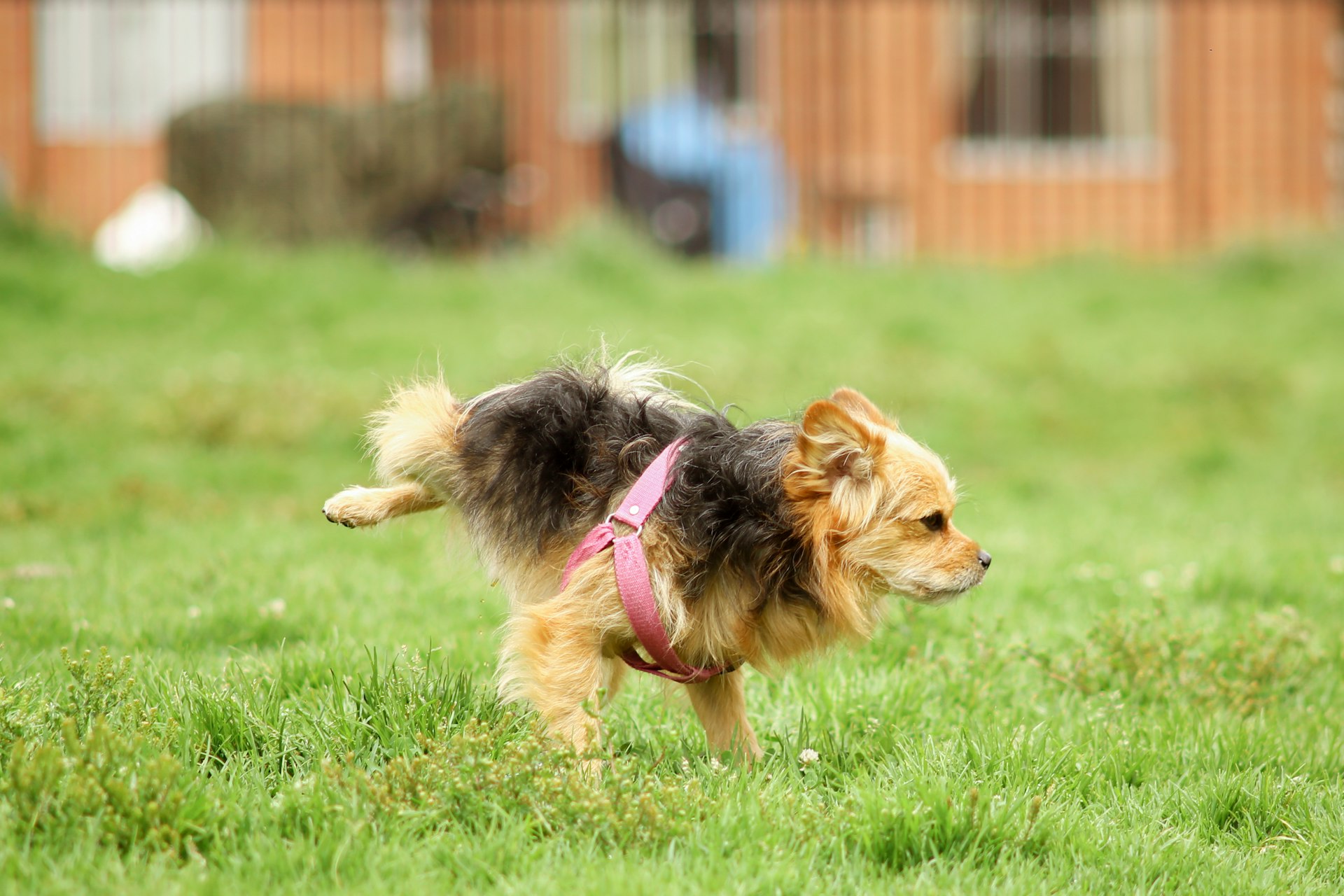Have you just moved to a new home and noticed your dog won’t pee anywhere?
Or maybe you're trying to change their usual potty spot?
Don't worry—this can be frustrating but totally manageable!
Dogs can be picky or hesitant when it comes to relieving themselves in unfamiliar environments. But with patience and a few smart strategies, you can get them comfortable peeing in a new place in no time.
In this post, you'll learn:
- Why your dog may refuse to pee in a new place.
- How to train them to pee on command.
- 13 foolproof tips to help your pup adjust quickly.
Let’s dive in!

How to Get a Dog to Pee in a New Place
You can train your dog to pee in a new spot by:
- Cleaning the old spot thoroughly.
- Choosing an ideal, quiet area.
- Using command words.
- Offering positive reinforcement.
- Being patient and consistent.
Now, let’s break it down into 13 easy tips!
13 Tips To Get Your Dog To Pee In A New Place
#1: Eliminate old pee smells
Dogs are creatures of habit. If they still smell their scent in their old potty area, they'll likely return there.
👉 Solution: Use an enzymatic cleaner to break down urine odors. DIY options:
- For fabrics: 1 cup water + 1 cup vinegar + 2 cups baking soda.
- For hard floors: ½ cup vinegar + 1 gallon warm water.
Let it sit for 10 minutes for the best results!


#2: Choose a quiet, distraction-free spot
Pick an area away from foot traffic, loud noises, or other animals. Dogs like to feel safe and private when doing their business.
Bonus tip: If your dog prefers grass, stick to grassy areas. If not, consider potty pads or artificial grass indoors.
#3: Make the new spot smell familiar
Help them recognize the new area by:
- Placing paper towels soaked in their urine in the spot.
- Bringing their favorite blanket or toy nearby (without distracting them too much).
#4: Stick to a potty schedule
Routine is key. Take your dog to the new spot after waking up, eating, drinking, or playing.
Pro Tip: Puppies may need to go every 2 hours, while adults usually go every 4–6 hours.
#5: Use a cue word or phrase
Pick something simple like “Go potty!” or “Go pee!” and use it consistently when they start peeing.
Only say the cue when they are about to urinate, so they associate the word with the action.
#6: Supervise & stay close
Stand near them (but not too close to distract). Your presence reassures them and allows you to guide them back if they wander off.
#7: Keep the leash on (at first)
Especially in the first few weeks, use a leash to keep them focused and prevent them from running off before doing their business.
Once they get used to the spot, you can remove the leash gradually.
#8: Reward immediately
Right after they pee, reward with:
- High-value treats.
- Lots of verbal praise (“Good boy/girl!”).
- A quick play session or belly rub.
Rewards motivate them to repeat the behavior!
#9: Keep potty trips short & sweet
If your dog doesn’t pee within 10 minutes, head back inside and try again after 10–15 minutes.
Long, unsuccessful potty trips can confuse them or make them anxious.
#10: Be consistent
Always take them to the same spot at the same times. Switching up places too often can confuse them.
Stick to the schedule and location, even if progress feels slow!
#11: Avoid scolding
Accidents happen, especially in new environments.
Never punish or yell if your dog has an accident. It could create fear and negative associations with peeing around you.
#12: Train them to pee on different surfaces
If you travel often, expose your dog to various surfaces:
- Grass
- Gravel
- Concrete
- Artificial turf
It’ll make them more adaptable and less likely to “hold it in” when faced with something unfamiliar.
#13: Practice indoors with potty pads (if needed)
For puppies or small dogs, start indoors with potty pads near the new area. Gradually move them closer to the final spot until your dog adjusts fully.

Why Won’t My Dog Pee in a New Place?
Here are some common reasons:
- Feeling unsafe: New environments can make dogs anxious.
- No familiar scents: Dogs rely heavily on smell.
- Unfamiliar surface: Grass, gravel, or flooring textures may feel strange.
- Distractions: Too much noise, people, or animals around.
- Negative association: Past punishment could make them hesitant.
- Rain or bad weather: Many dogs dislike peeing in rain.
- Habitual training: They’re used to a specific spot or potty pad.
Final Thoughts
Training your dog to pee in a new place might require patience, but it’s absolutely doable with consistency, positive reinforcement, and the right techniques.
Just remember: 🐾 Stay calm
🐾 Reward generously
🐾 Keep a routine
In no time, your furry friend will feel comfortable and confident peeing in their new spot!
Related Posts:
How Many Dogs Get Killed Each Year in the U.S.? Shocking Facts You Should Know
9 Reasons Why Small Dogs Bite Ankles + 5 Tips To Stop It